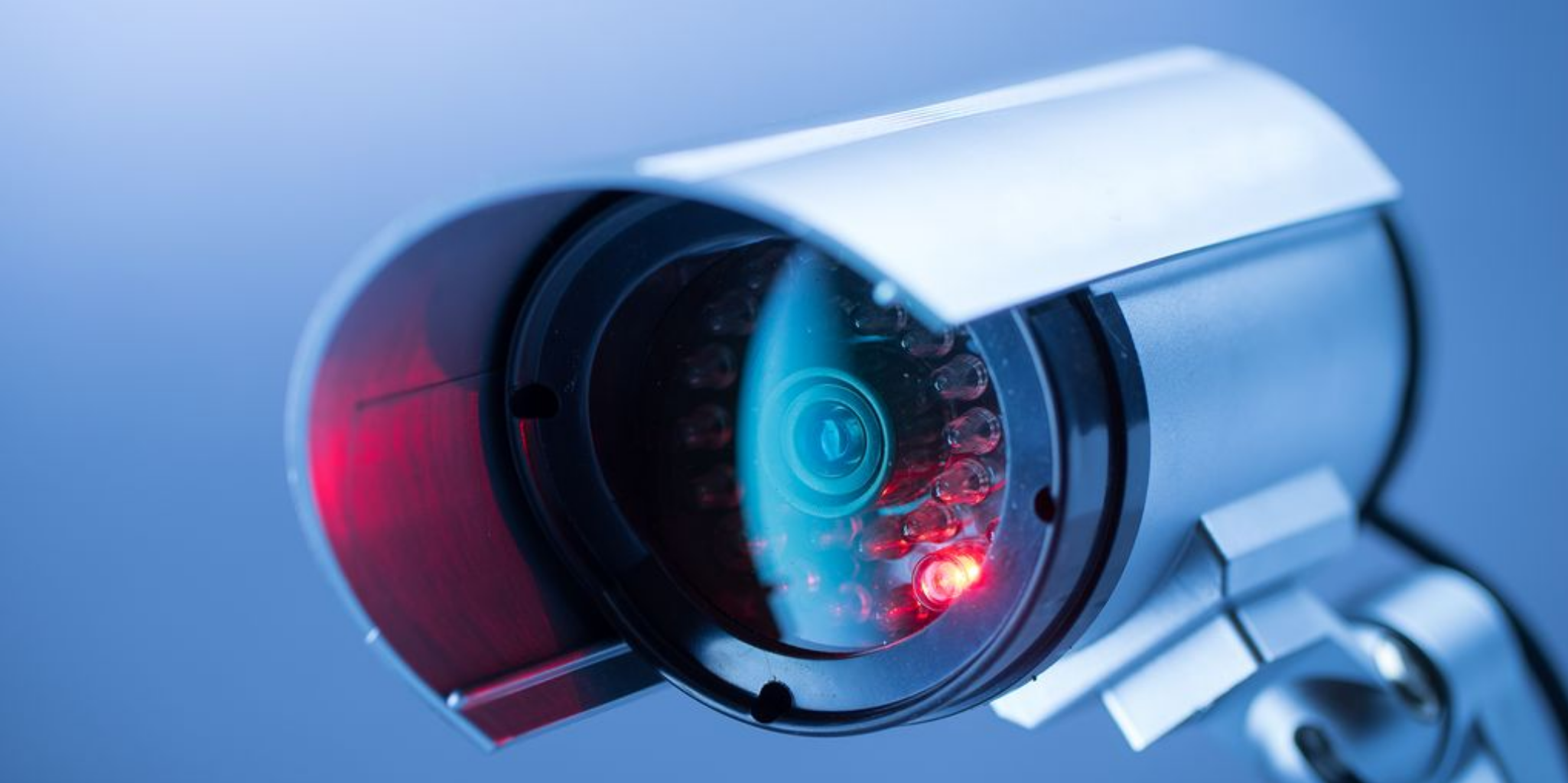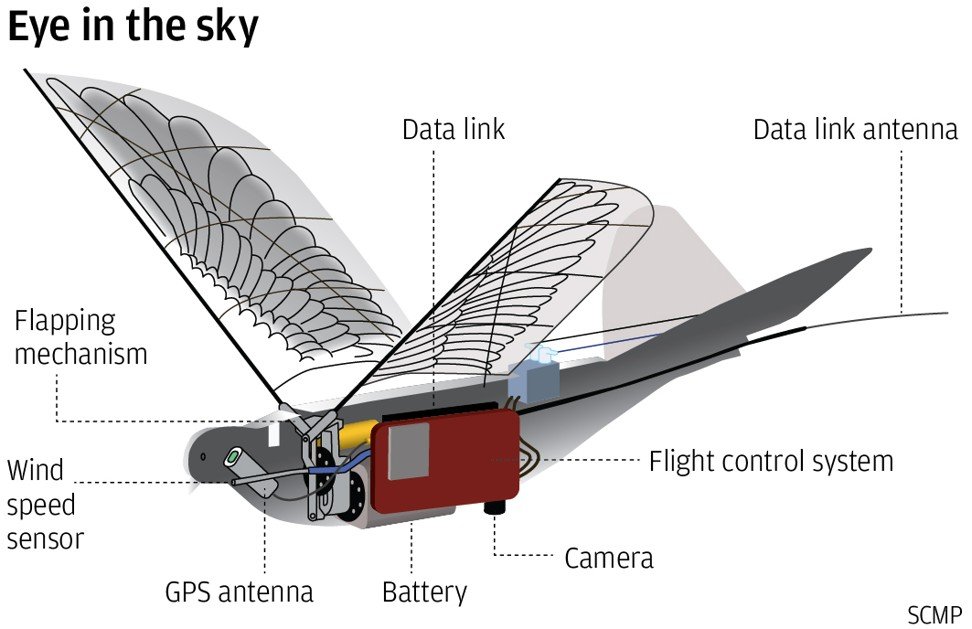
It isn’t surprising that many Google search results for “artificial intelligence for government surveillance” involve China. The consensus is that China is either catching up or overtaking the US in AI research, and it’s quite open about using AI for government surveillance of its own people.
While it might be the most aggressive surveillance state on earth – China isn’t the only nation to deploy AI for surveillance purposes – and in this article we set out to explore the new and unique uses of domestic surveillance and spying applications of AI around the world.

The US has a long history with government surveillance, starting in 1928 with wiretapping. Many people still remember the startling revelations in 2013 of National Security Agency whistleblower Edward Snowden about exactly what the US government is compelling phone companies to do with their personal calls. Government surveillance is also a growing concern in Russia, the UK and Australia as well as the UAE.
This is not to say that government surveillance is always a bad thing. As with most technology, AI has its pros and cons, and with the correct application, the benefits (say, for crime prevention) could be argued to outweigh the costs. However, AI technology is often challenging to regulate, so misuse and abuse is a real concern.
Video monitoring is the most prevalent and well-known use of AI-based government surveillance. Whether it is through closed circuit television (CCTV) or unmanned drone, many people believe that someone is watching at all times, especially in public areas and secure areas such as airports.
Today’s surveillance technologies take many forms – well beyond the stationary security camera in a mall or airport. In this article, we explore seven specific, unique AI surveillance use-cases around the world:
- Robotic birds
- Smart glasses
- AI-enabled body cameras
- EEG headbands
- Uniforms
- Wristbands
- Social Credit Score
We’ll begin by exploring one of the more unique use-cases on our list:
Robotic Birds
Though extensive of discussion on robotics and drones as an instrument for covert civilian surveillance is available elsewhere, some tactics to bring this about is worth mentioning for sheer cleverness.One of these is drones that look and move like birds, but take much more interest in the people below them than real ones will ever do.
Birds are everywhere, and most people do not give them much attention. This fact has brought about an interest in using bird forms to carry out surveillance.
Robotic birds capable of autonomy and staying in the air for more than a few minutes have been around since 2011 with Festo’s Smartbird, which looks and moves like a herring gill. However, the first iteration of robotic birds for video surveillance is doves rather than gulls.
Appropriately called the Dove program, a team of top scientists at the Northwestern Polytechnical University, Xian led by Song Bifeng developed bird drones for deployment in several areas in China, particularly Xinjiang. While the program is still in its early stages, Dove team member Yang Wenqing says she believes it “has some unique advantages to meet the demand for drones in the military and civilian sectors.” Of particular benefit is the ability of these drones to go about largely undetected, even by radar.
Here is an illustration of the Dove itself:

SCMP hosts a one-minute video showing this robotic dove in flight.
The US Army reportedly invested in bird-like drone technology in 2013, purchasing 30 microdrones called Maveric from Prioria Robotics. However, these are much chunkier than the Chinese Dove, and one company claimed it is a substandard product overall.
Whatever the case, there is no indication that the US has progressed any further in bird-like technology for domestic video surveillance. The nearest the US has come to this type of aerial drone surveillance was during an NYC new year’s celebration – and the effort was foiled by the rain.
Smart Glasses
Another way the government might be monitoring its citizens is through “smart” glasses equipped with facial recognition software to scan faces and match them to persons of interest in second. Developed by Xloong, these augmented reality (AR) eyewear (such as the AR Boss Smart Glasses Techlens T2) provide law enforcement with a quick way to patrol a large number of people. With China’s plans to create a database of its 1.3 billion citizens for facial recognition, it is definitely a good match.
Below is the sports version of the Xloong AR glasses:
According to this article, expanded use of such smart glasses to Southeast Asian countries and the US is in the works. However, such technology is already available in the US. In fact, the company LLVision that supplied the AR product GLXSS to Chinese law enforcement is remarkably similar to the commercially less-than-successful Google Glass, which incidentally is making a comeback as an enterprise rather than consumer product.
AI-enabled Body Cameras
Wearable surveillance tech is also making its debut in Malaysia through body cameras. The Auxiliary Force Sdn. Bhd. (AFSB) struck a deal with YITU Technology to supply them with video systems using facial recognition to look for criminals. AFSB CEO Dato’ Rosmadi Bin Ghazali stated: “This is a significant step forward for us as we leverage artificial intelligence to increase public safety and security.”
Unlike China, however, the AFSB facial recognition system analyzes captured footage rather than live feeds, although the AFSB plans to expand it in that direction. At least one law enforcement agency in the US is using Amazon’s facial recognition system Rekognition in a similar, though less obtrusive way.
Instead of body cameras, the police use the system to collate videos and images online, dash cams, and from other sources to find matches to a database of persons of interest. While apparently very useful in identifying criminates, concerns about accuracy and racial profiling continue to restrict its widespread use in law enforcement.
The Washington Post hosts a 6:11-minute video on law enforcement uses of the Rekognition system, and the resulting questions about privacy that they stir up.
The Wall Street Journal summarizes China’s growing us of surveillance technology in the short video below:
China is also beginning to employ facial recognition and computer vision in classrooms, inuring students to surveillance at a young age, and – purportedly – encouraging greater concentration and focus in the classroom:
For better or for worse, artificial intelligence applications for government surveillance are likely to proliferate as these use-cases (in airports, schools, shopping malls) gain traction and prove valuable from an economic or security perspective.
EEG Headbands
An interesting development in AI wearable tech is brainwave monitoring. North America boasts dozens of electroencephalography (EEG) startups – including brands like Muse, Thync, and others. Most of these brands claim to aide in some kind of mood control (aiding with focus or meditation, for example), while others serve as open platforms for brain-computer interface experiments.
The Chinese government sanctioned the use of brain monitoring equipment on employees to capture data on emotions and other brain activities. Employees wear sensor-equipped caps and special cameras developed by Deayea Technology Co., Ltd.. Dubbed “emotional surveillance,” the project targets train operators, military personnel, production workers in some sectors, and perhaps schoolchildren in the future, to increase productivity and efficiency.
US-based company BrainCo plans to provide headband brain-reading units called Focus for a pilot study in China. The idea is to help teachers identify students that might need extra help.
Below is a 3:21-minute video demonstrating how the Focus system works:
Uniforms
It would be difficult to decide if this is as worrisome when it comes to extreme control as “intelligent uniforms” students at 10 schools in Guizhou Province have to wear. Chips integrated into these uniforms track and identify students, enabling parents, teachers, and other figures of authority to know where they are at all times.
Yet China is not alone in using AI to monitor schoolchildren. Federally funded schools have to install Safety Management Platforms (SMPs) – such as Securly, and GoGuardian – in school computers to monitor student activity.
These SMPs use natural language processing to scan the millions of words typed by students into these computer to look for undesirable acts (bullying) or harmful behavior (self harm). A school in France is using Nestor software for two online classes to see if students are paying attention to a lecture.
Below is a 1-minute promotion video for GoGuardian, highlighting its value proposition for teachers, and reviewing its basic features:
Wristbands
Students are not the only targeted population segment under scrutiny, however. Prison inmates expect to be under constant surveillance, such as cameras covering most of the prison, including cells. However, Yancheng Prison in Hong Kong is apparently prepared to go a bit farther, including robotic arms checking waste matter for drug stashes (such at pills wrapped in plastic), and wristbands.
According to SCMP:
Woo said other new technology, such as a wristband to be tested at Lo Wu Correctional Institution, would help officers prevent suicides.
…The wristband, which is similar to fitness products sold on the market, would allow officers to monitor an inmate’s heart rate and whereabouts in real time.
“If the pulse is irregular, staff will be alerted,” [Commissioner of Correctional Services Danny Woo Ying-ming] said.
Should an inmate try to remove the wristband, the alarm will also be triggered.
Below is a one-minute video illustrating how camera surveillance might work in Yancheng Prison – according to a report by the South China Morning Post:
It isn’t entirely clear whether the wristbands of waste-inspecting robots leverage artificial intelligence at this time – but the technologies could certainly be combined with computer vision to create a tighter perspective on
Artificial Intelligence for “Social Credit” Scoring
There is an episode in the Twilight Zone-esque British television series Black Mirror entitled “Nosedive” that explored a world where social media, eye implants, and a star rating system dictates each person’s place in that world. A high star rating system means more privileges, while a low star rating means becoming a virtual outcast.
While the basis of the premise is on peer acceptance and largely subjective and arbitrary, an eerily similar scenario is in the making with the Social Credit Score program – a national reputation system being developed by the Chinese government.
The premise behind the program is basic governance: Punish the bad, reward the good. The idea is to motivate Chinese citizens to be good members of society so they can enjoy the benefits. The national rollout of the program will be in 2020, but dozens of pilot programs are gathering data to make it more responsive.
The problem with this system is not the bad things that can happen to people with low scores, but the sources of data used to separate the good from the bad.
As might be expected, the data from social media and other online activities would definitely be part of the mix. Such a comprehensive sweep of each person’s private and personal information is certainly a disturbing thought, especially in the hands of an openly authoritarian state. Add to that the fact that there is no transparency to the algorithms used to determine ranking. In a very real sense, the government can control a person’s socioeconomic success or failure.
France 24 put together a 4-minute video exploring the social scoring system from the perspective of Chinese citizens:
Its hard to keep 1.4 billion people in line, and China’s social score (combined with a more obedient Confucian culture) might help the ruling party do just that.
Some experts – including Emerj founder Daniel Faggella – believe that China’s surveillance technologies will lift AI-based monitoring to a level of new “normal” – potentially spreading the more invasive use-cases of these technologies to Western nations. European countries, including the UK, might consider implementing a similar program for its citizens, although survey results indicate a majority (78%) or participants thought it was a bad idea.
The growing awareness of China’s scoring system has prompted mostly a dystopian sentiment from Western citizens and news outlets.
Concluding Thoughts on AI for Government Surveillance
Government surveillance is integral to national security. It is necessary to ensure the safety and security of its citizens from internal and external factors. However, it is not always easy to discern the fine line between security and control. That said, there is also a fine line that separates advocacy from paranoia. The key is achieving the right balance in either case, depending on the context.
China features quite prominently in many of current applications of artificial intelligence for government surveillance, and frequently in a negative light. However, it is important for privacy advocates to understand that the cultural and ideological differences between China and Western countries are huge.
China’s policies on privacy and personal freedom work for them, and condemning them from a Western point of view is ineffectual as well as offensive. There is even the idea that when it comes to AI for government surveillance and data protection, China has a better understanding of the best way to engage with AI.
Whether this is true or not, the fact is China is handling the disruptive influence of AI technology in a much more proactive manner than other countries, especially the US. As Daniel Faggella points out, “The West needs a new strategy to both maintain it’s own values, and compete on the international stage. The default is not good enough if the West wants to ensure its values and prosperity continue.”
While the US and other countries might eventually benefit from its more cautious and circumspect approach to AI, China is currently reaping the economic benefits from the gaps left in the consumption and implementation of AI for government surveillance. It may be the case that squashing individual rights and freedoms can be done in a way the promotes economic and technological predominance on the global scale.
Only time will tell.
Header image credit: Abode Stock







